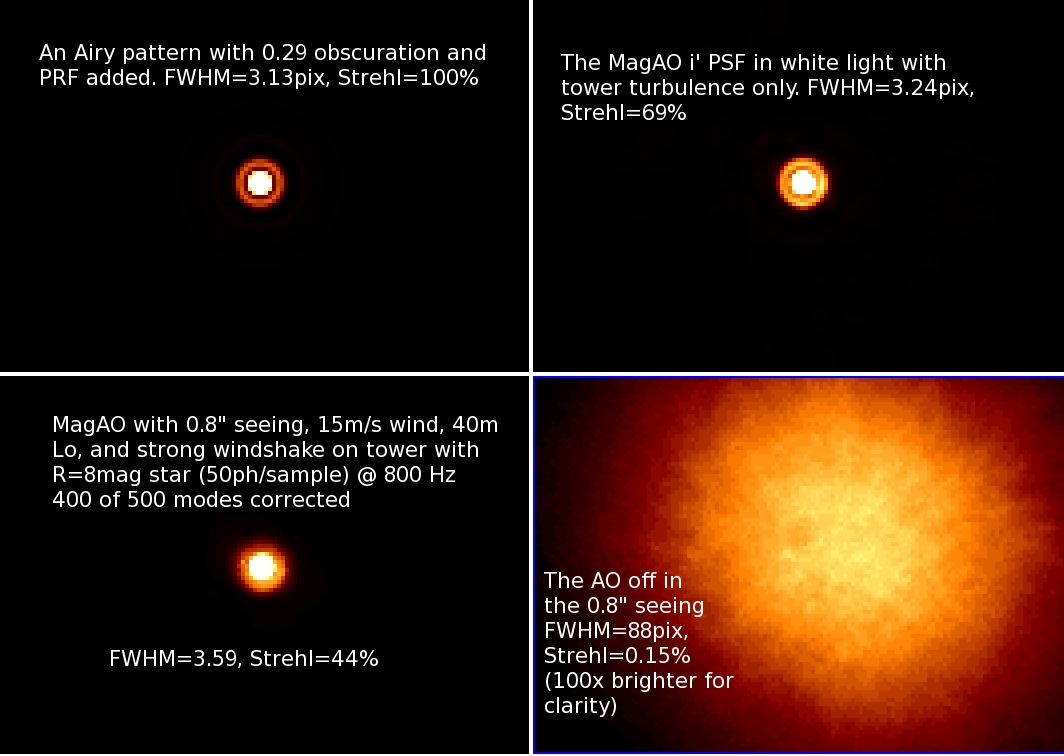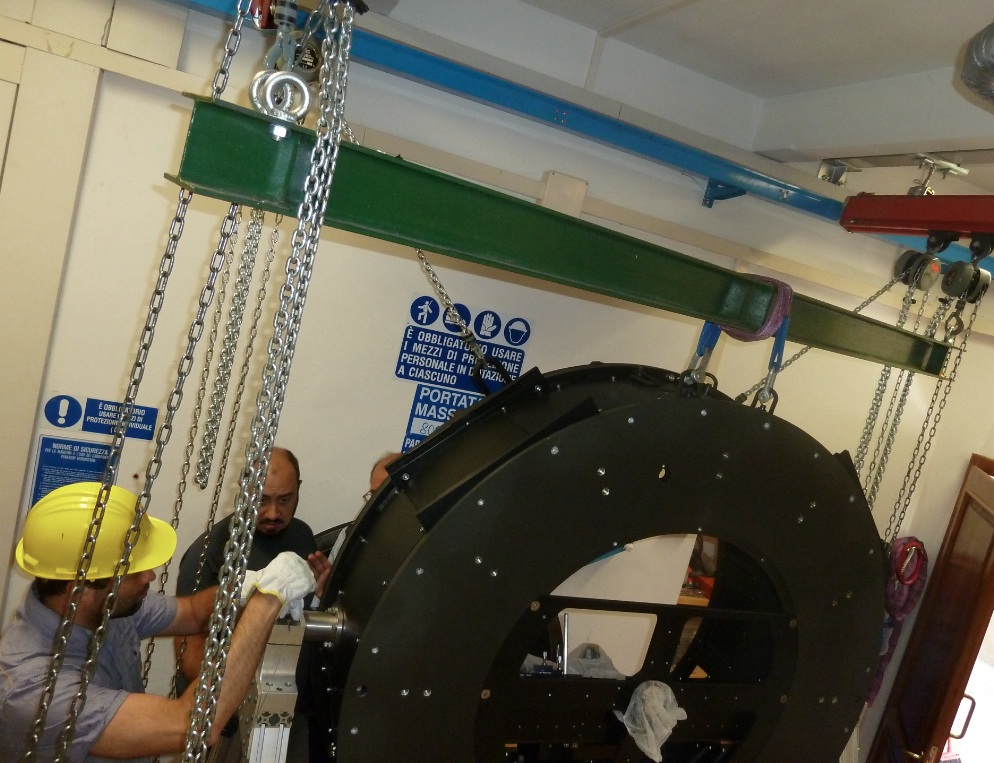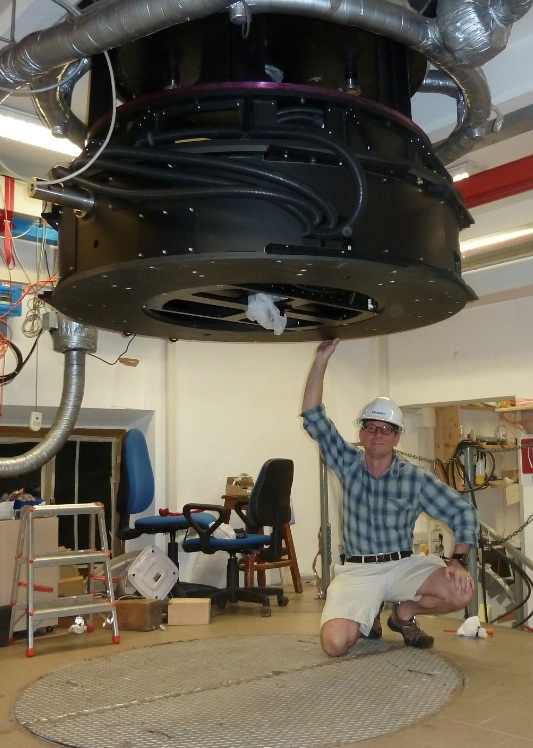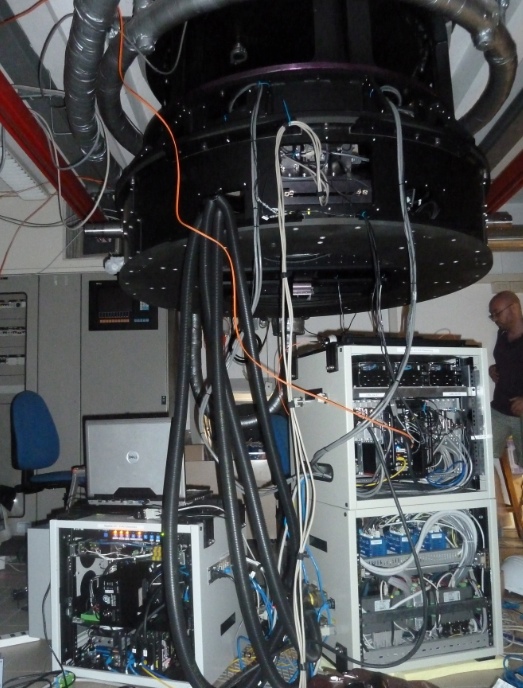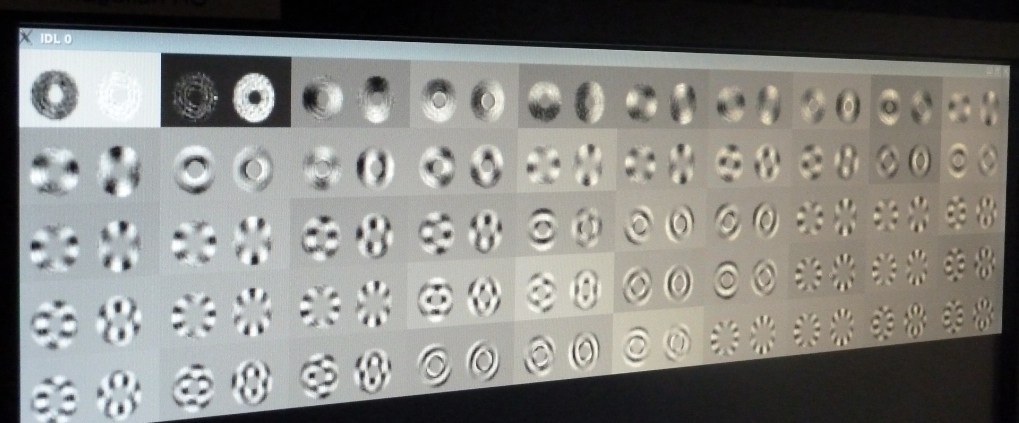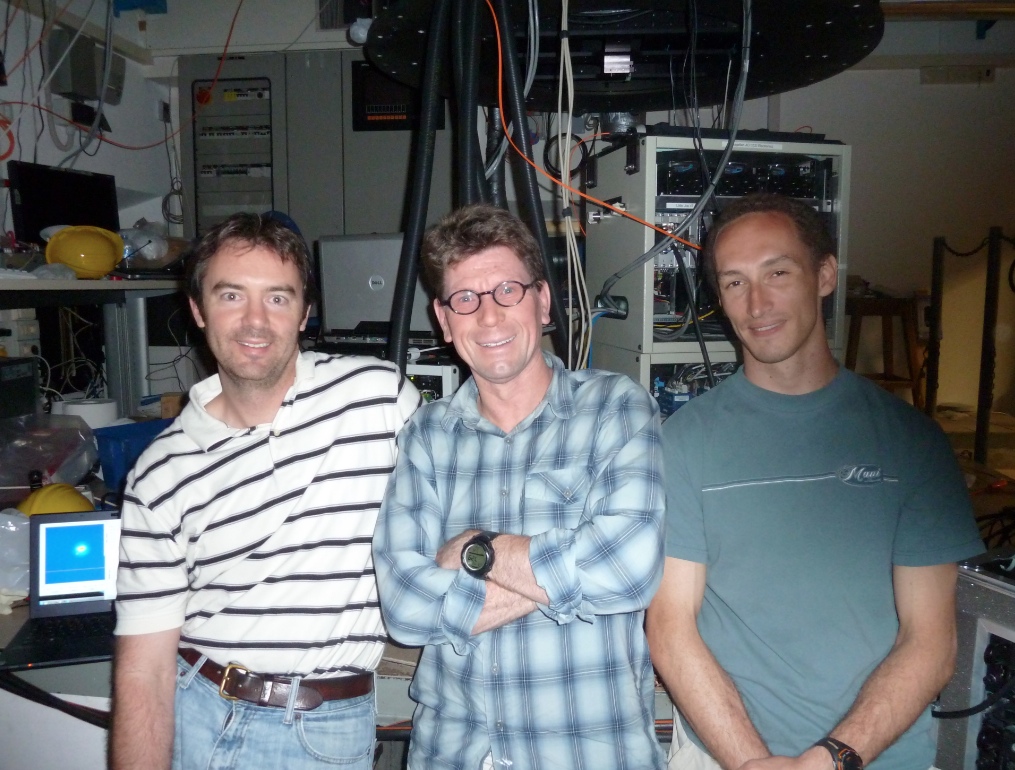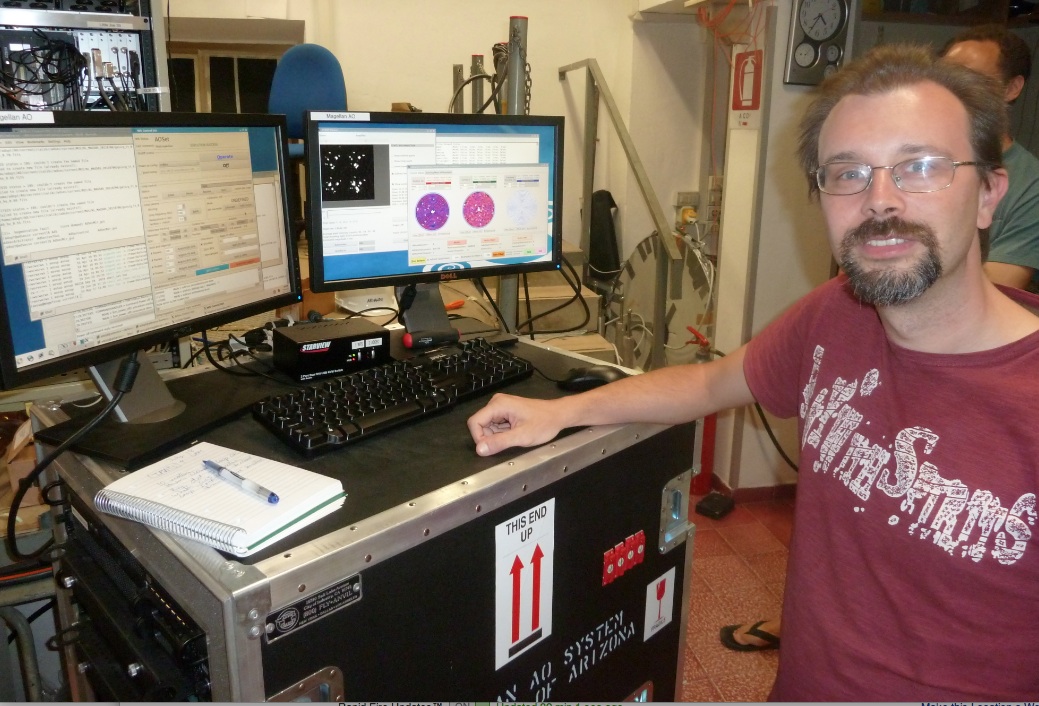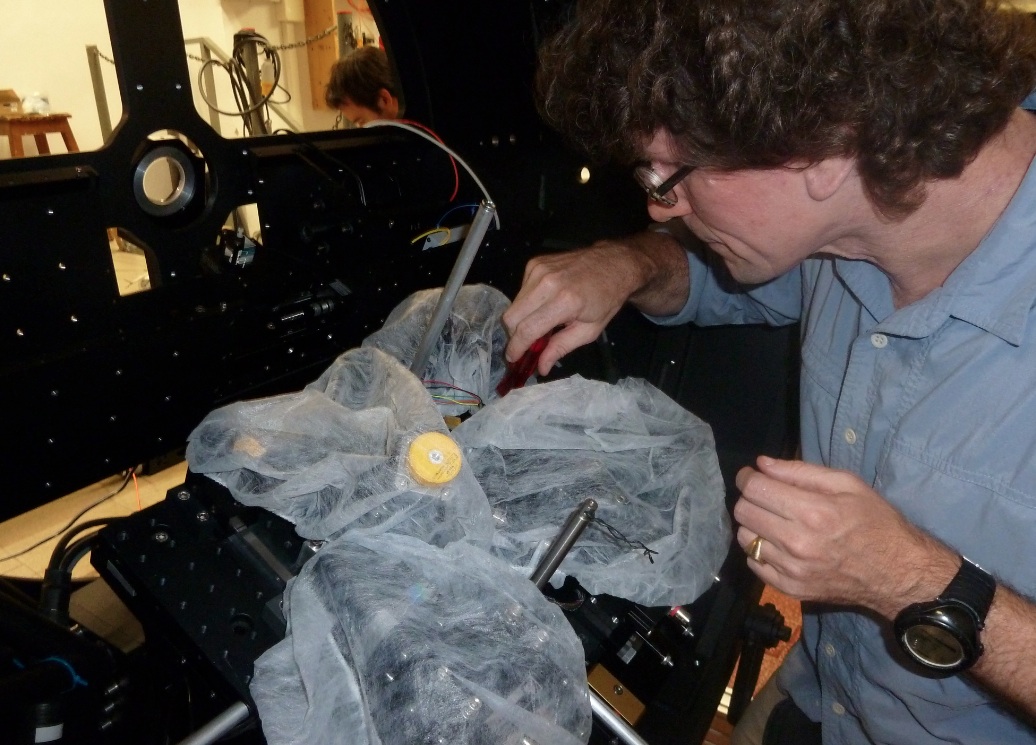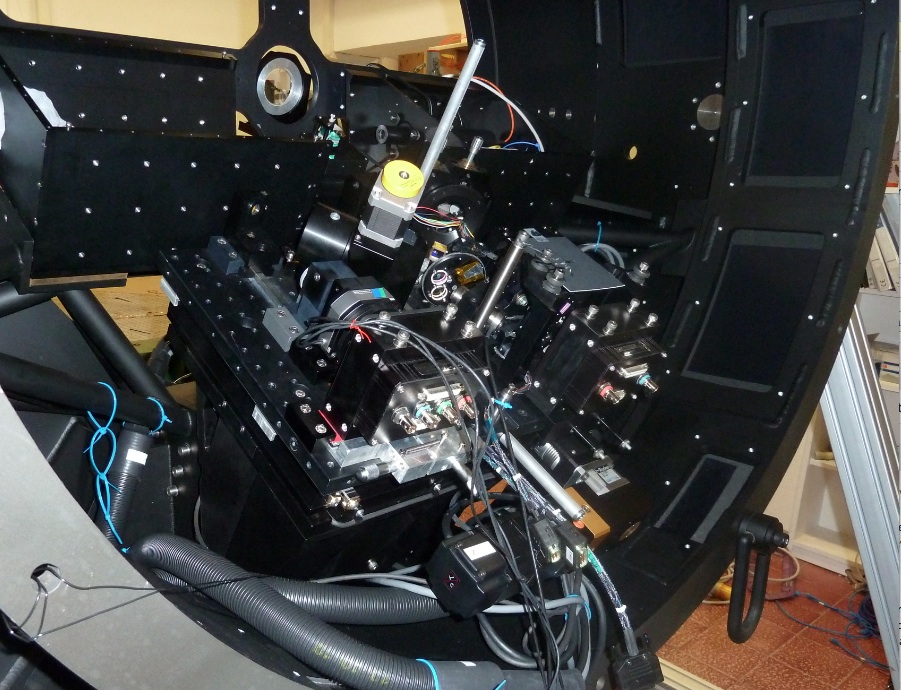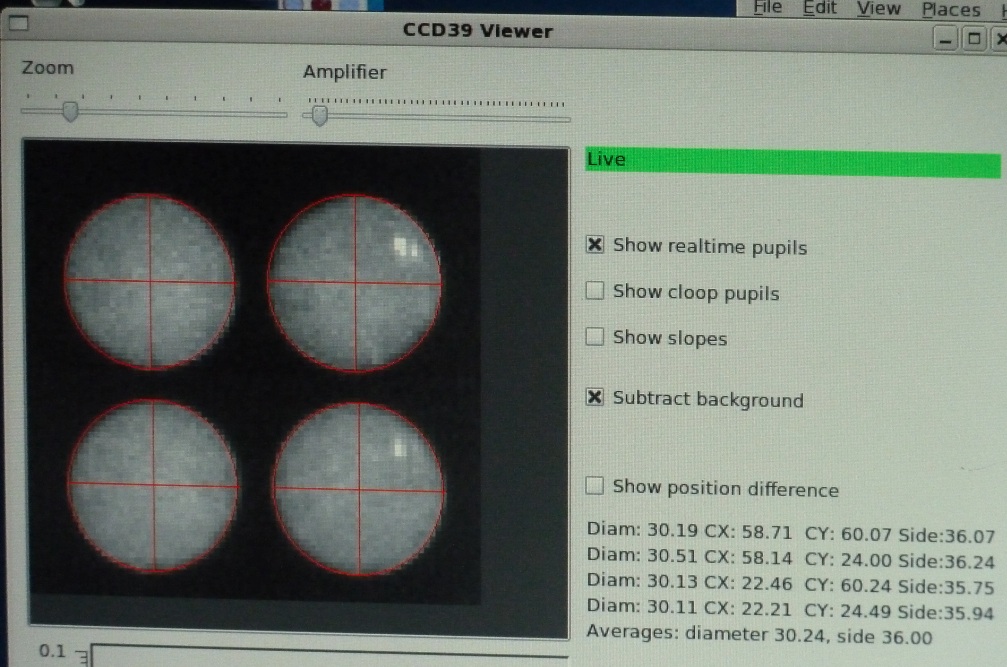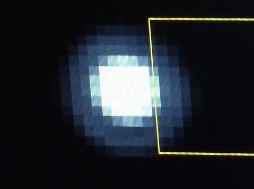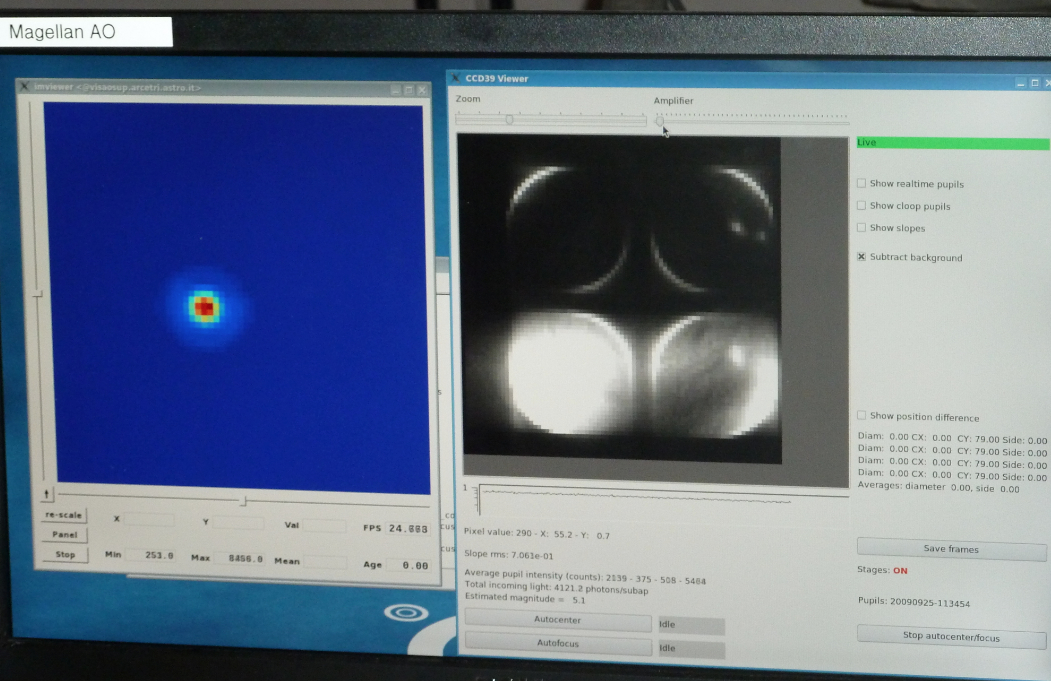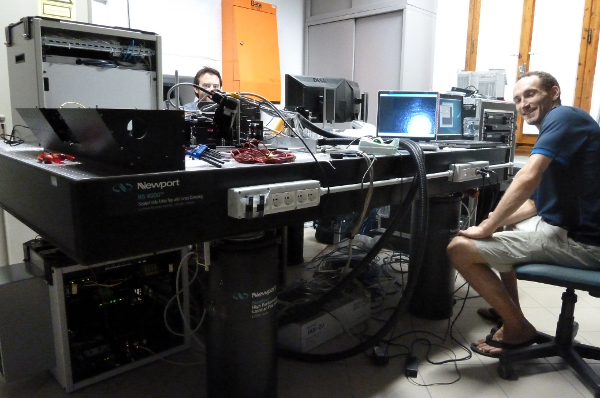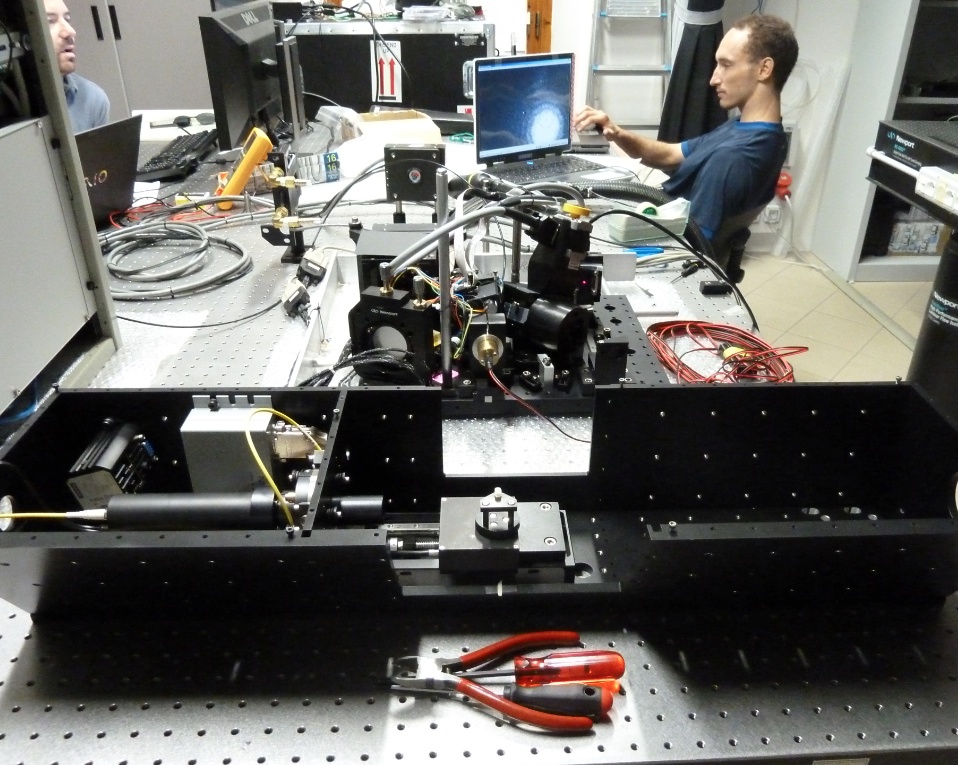Yesterday, in strong winds on the outside of the test tower, we closed the loop at 400 modes and 800 Hz for the first time. The results were very nice and better than expected. In simulated 15m/s winds with injected 0.8″ seeing we recovered 44% Strehl in i’ (765 nm) and 28 milliarcsec resolution (this is an improvement of 293 times in peak amplitude over the AO loop off image, and 24 times sharper image). The corrected PSF is very high contrast and drops by 1000x inside 0.1″. Overall we are very pleased, the loop is very stable and has yet to crash or open when running. A very exciting day.
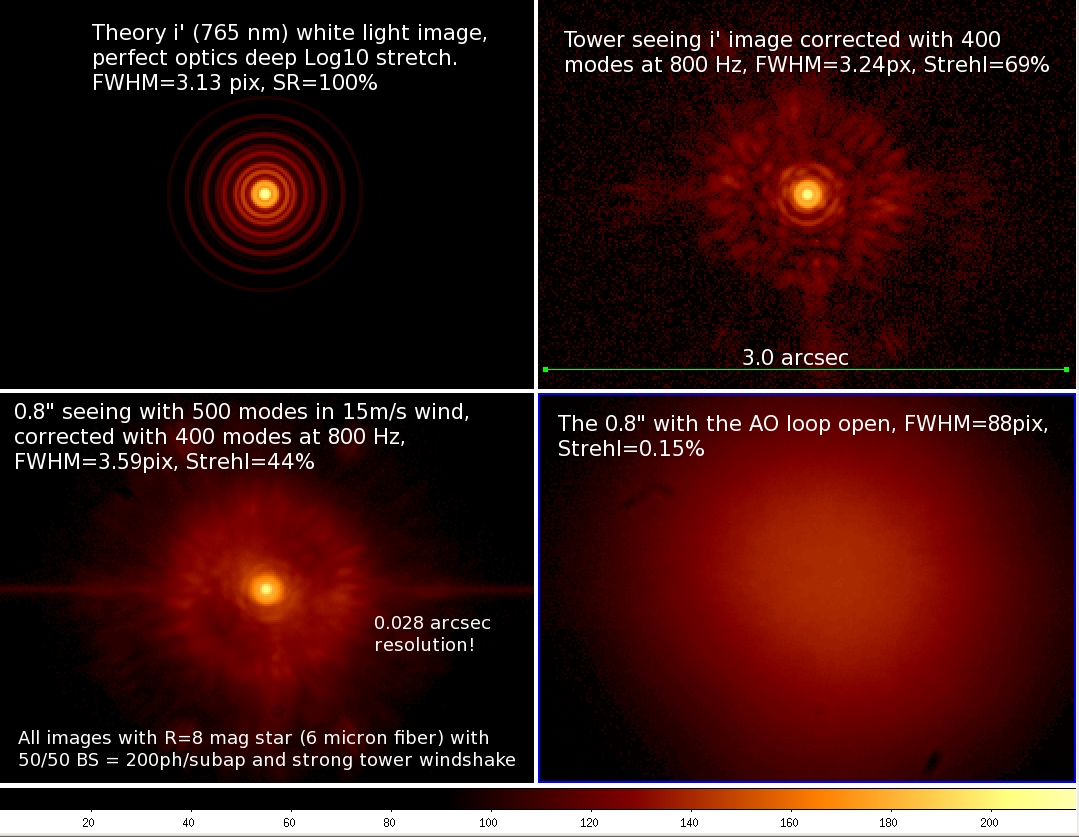 Log images of a perfect PSF, and those obtained with the loop on, with and without injected 0.8″ seeing
Log images of a perfect PSF, and those obtained with the loop on, with and without injected 0.8″ seeing
